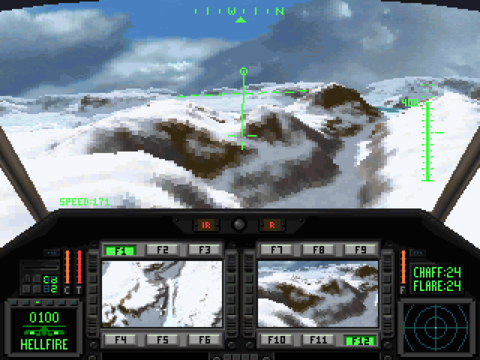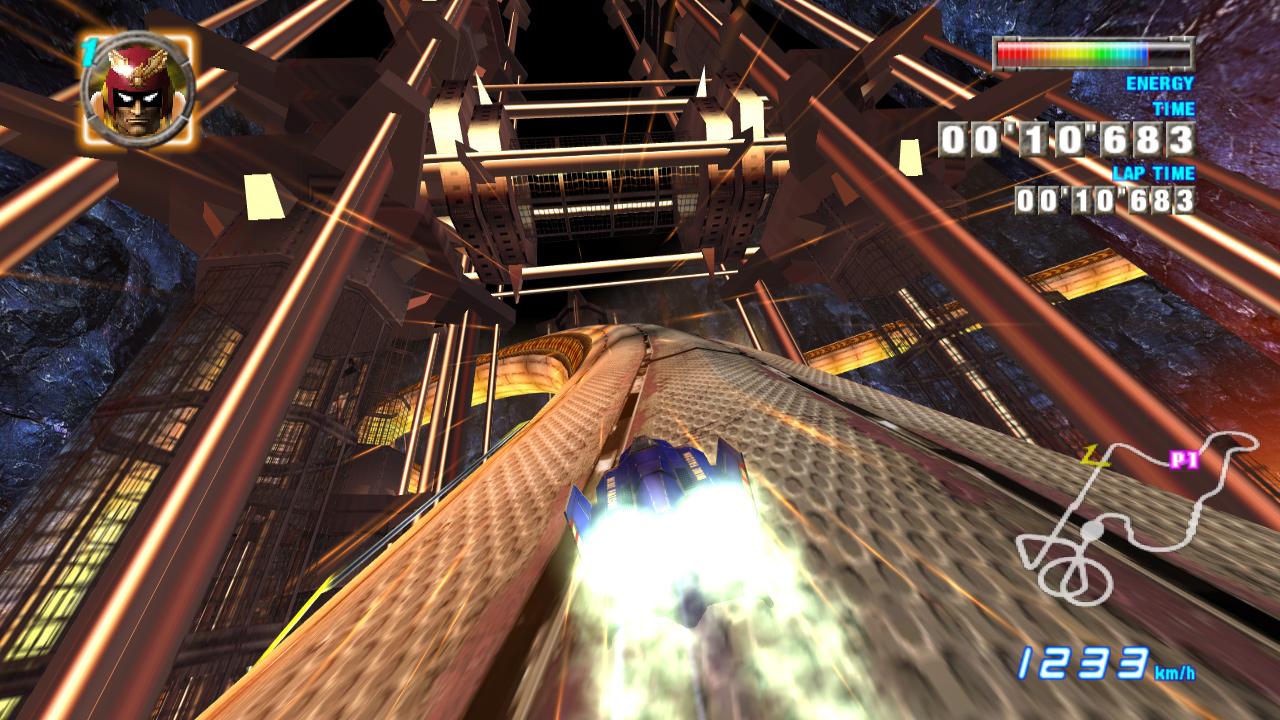@Xtasy26 said:
@Jag85 said:
@Xtasy26 said:
@Jag85 said:
@Xtasy26 said:
Awesome thread TC! I agree with pretty much everything you had there. However, Unreal was the Crysis of 1998, there is no WAY Half-Life was better looking than Unreal. It used Quake II engine and it wasn't as good as the very first Unreal Engine. I remember when Unreal came out in the summer of 1998 that it got rave reviews for it's graphics reviewers was saying R.I.P. Quake II.
I am glad that you included consoles as those consoles were some of the first ones to use 3D GPU's like the Voodoo Graphics for San Francisco Rush and Mace the Dark Age, you could tell as they had the 3DFX logo, I remember being awed by the graphics when I first saw it. Speaking of San Francisco Rush you got it wrong for 1996 as Virtua Fighter 3 didn't use 3DFX's Voodoo Graphics where as San Francisco Rush did. It easily beat Virtua Fighter 3 as gaming running on 3DFX's Voodoo Graphics vastly looked better than any other games that didn't run on it like Virtua Fighter 3.
As for 1997, San Francisco Rush Rock Alcatraz Edition was significantly better looking than Sega Bass shipping as they used 3DFX's Voodoo Graphics chip too which was better than Real 3D chip that was used in Sega Bass Fishing.
As for 1998, you got it right as I remember Daytona USA 2 looked awesome back in 1998 using the Real 3D chip.
Good suggestion with Unreal. I was actually considering it, but ended up going for the more popular option with Half-Life, without spending much time comparing them side-by-side (since there's so many games to consider). I'll compare them again and maybe update the OP if necessary.
However, I'd have to disagree with your comparison between 3dfx and Real3D. The Real3D/Pro-1000 chipset used by the Sega Model 3 was by far the most powerful GPU around 1996-1997. And the Model 3 didn't just use one, but used a dual GPU setup. While the 3dfx Voodoo was capable of around 300,000 triangular polygons/sec in real-world performance, the Model 3's dual Real3D/Pro-1000 chipset was capable of over 1 million quadratic polygons/sec, and 2 million triangular polygons/sec, in real-world performance, with more advanced anti-aliasing and specular lighting & shading effects to boot. Even the Real3D/100 chip later used with the Intel740 in 1998 was significantly toned down and doesn't come close.
There were other Sega Model 3 games I could have chosen. The graphics of SCUD Race, for example, looks far superior to San Francisco Rush, as far as 1996 arcade racing games go. However, I went with Virtua Fighter 3 because it was a major breakthrough in terms of 3D character model graphics in 1996. And I'm sure you'd agree if you compare it side-by-side with the 3dfx-based arcade fighting game you mentioned, Mace: The Dark Age. And for 1997, I chose Sega Bass Fishing because of the advanced water effects, which again is unrivalled by any other game that year.
Anyway, I'm glad you agree with my other choices though.
Hmm...didn't know that the Real3D/Pro-1000 was the most powerful GPU in 1996-1997. I was under the impression that the 3DFX Voodoo was the best GPU that was running games Arcade/PC wise but now it makes sense. And you are right about intel 740 being used on the Real3D/100 chip and it had pretty good performance/image quality compared to the early generation of PC graphics cards.
The question then becomes why didn't Real3D come out with a PC Graphics card with the full blown specs with 2 million triangular polygons back in 1996-1997. They would have smacked 3DFX/nVidia/ATI? I was under the impression that 3DFX had the lead in terms of technology. I guess poor business decisions lead to it.
By chance, did you follow GPU's back then? I am interested to know the opinions of others as to what they think caused the demise of 3DFX because as I stated they were pioneers and leaders on PC graphics from 1996 to the late 90's.
Anyways, I am glad you included games from the 70's and 80's as I never thought that graphics stagnated for nearly a decade as someone has mentioned.
It seems like graphics started to pick up in the mid to late 80's and proceeded on from their with Wolfenstein 3D and Doom.
When the Real3D/100 was announced in 1996, it was initially hyped up to be the most powerful GPU on the PC market, but then it just kept getting delayed until Intel released it in 1998, by which time other GPU's had already caught up and some overtaken it. Yes, it was down to poor business decisions from Real3D, which, despite having the most powerful GPU at the time, were newcomers to the PC market and failed to make the right business decisions at the right time.
The reason why the Real3D/100 was significantly toned down was because the Real3D-Pro/1000 would have been way too expensive. Considering how expensive a Sega Model 3 arcade machine was back then, I would imagine that a graphics card based on the Real3D-Pro/1000 may have cost in the thousands rather than the hundreds, so the Real3D/100 was a more affordable cost-reduced solution, while still maintaining a lead over competitors in 1996.
I did follow GPU's back then, and remember always wanting a 3dfx Voodoo or a NEC-VideoLogic PowerVR, but couldn't afford them (since I was barely a teenager back then). However, I'm not entirely sure why 3dfx declined. I think a major factor that contributed to their decline was the arrival of the nVidia GeForce 256, which was the first commercially released PC GPU with hardware T&L (transform & lighting) capabilities (previously limited to arcade machines) and no longer relied on CPU power like 3dfx did.
To be fair to the 70's, the graphics were actually progressing quite rapidly, but the progress wouldn't be that noticeable to modern audiences. For example, the arrival of sprite graphics and vertical scrolling in 1974 were major breakthroughs, and then those sprites started getting more detailed around 1975-1976. And then you also had the arrival sprite-scaling in 1976 and of course colour graphics in 1978, which were also major breakthroughs. But yes, it was in the 80's, the arcade golden age, that the pace picked up greatly.
Thanks for the interesting tid bit about the Real3D/100, sounds like it was really powerful chip. Which if you think about it makes sense. Real3D was a division of Lockheed Martin which used to make graphics tech for simulators to train pilots flying fighter jets. I guess it wouldn't be surprising that Real3D/100 was the most powerful GPU in the world at the time as you would have to make GPU's that render real life environments in real time. I guess 3DFX's success initially was that they were able to bring incredible graphics at a price point that people could buy instead of spending $1000+ dollars like mentioned for the Real3D/100. Thus, 3DFX gave off the impression (at least for me) that they were making the World's Most Powerful GPUs simply because they brought consumer grade graphics that people could buy.
As for 3DFX's decline I totally agree with you about the GeForce 256 as being a major factor (or was the start) of 3DFX's decline. The GeForce 256 not only had the features you mentioned but it performed better too. I think it was the first nVidia GPU that actually beat 3DFX's best or got close to it. I like to use the analogy that the GeForce 256 was a sort of a punch that made 3DFX go dizzy and the GeForce 2 released in 2000 was the sort of a knockout punch that 3DFX never really recovered from. In other words, they fell behind in the Graphics Race and failed to bring competitive GPUs to market in a timely manner. By the time they brought out the 3DFX Voodoo 5 5500 it was already beat by the GeForce 2 which came out month's earlier and was struggling to beat ATI's Radeon. The rule still exists today, nVidia and AMD would lose market share if they released one generation of GPU's that wasn't competitive to each other's GPU. Look at the GeForce FX 5800 Ultra or the somewhat weak HD 2900XT from ATI (which despite being weak, it was nowhere near the disaster that the GeForce FX 5800 Ultra was).
In any case, I am glad that you changed the graphics king award for 1998 to Unreal. That game was jaw dropping when it came out. The thing that really "wowed" me was the beginning of Unreal where the camera flew through the castle and wound around it you could see the beautiful reflections on the main entrance way leading to the castle. And as you progressed throughout the game it was a sight to behold. I remember finally completing the game in 2008 and was amazed at how the graphics looked for a game that came out in 1998.
An overall great thread! I think you might be the first person in SW that I totally agree with PC part of Graphics Kings and even manged to get me to agree with the Arcade Graphics Kings. :P
Yes, Lockheed Martin previously worked with the military, which is why the Sega Model 3's Real3D-Pro/1000 chipset was so powerful for its time. Interestingly, arcade rival Namco also worked with another rival military simulator company, Evans & Sutherlands, which produced the the Namco System 22 arcade system's TR3 graphics chipset, which was also powerful for its time in the early 90's and easily rivalled the Sega Model 2's Fujitsu TGP graphics chipset. All of these GPU's were very expensive at the time though, hence why they weren't available to consumers.
As for 3dfx, I agree. The problem with 3dfx was that they weren't able to keep up with the rapid pace of GPU development we saw from Nvidia and ATI in the early 2000's. Same goes for other GPU companies at the time too. Real3D, as we discussed above, released the Real3D/100 too late, by which time 3dfx had caught up. Likewise, NEC and VideoLogic produced the powerful PowerVR2 chipset for the Dreamcast, but they released it too late in the PC market, by which time Nvidia had caught up. Rendition, Hercules and Fujitsu also produced the first non-CPU-based PC GPU with hardware T&L (transform & lighting) capabilities, the Thriller Conspiracy (utilizing the Fujitsu FXG-1 Pinolite T&L chipset, similar to the Sega Model 2 arcade system's Fujitsu TGP chipset), but was eventually cancelled, leaving the GeForce 256 to become the first commercially released, non-CPU-based GPU with hardware T&L. And then with GPU's like the GeForce 2 and especially the Radeon 9700, other PC GPU companies just couldn't compete. In the end, the PC GPU market came to be dominated by ATI and Nvidia ever since the early 2000's.
Good recommendation with Unreal. I wasn't too sure whether to go with Unreal or Half-Life, but Unreal is definitely the better looking game of 1998. Also, Unreal 2004 just so happens to be my favourite FPS of all time...
For the most part, there's hardly been any disagreements over my Arcade and PC choices, besides 1983 (Dragon's Lair snub) and 1998 (where you recommended Unreal). Most of the disagreements mainly come from the console crowd, specifically Sony fans, due to several high-profile Sony snubs (FFVII, MGS2, Uncharted 2, Killzone SF).



Log in to comment